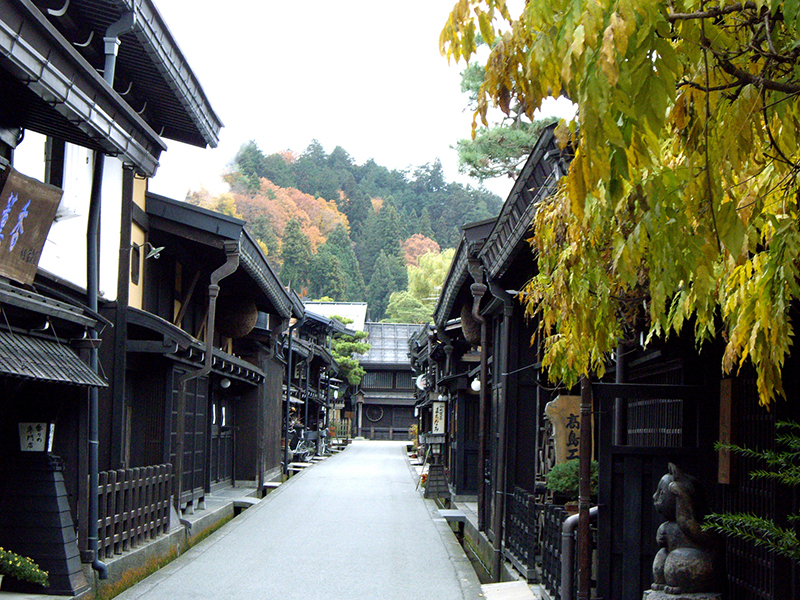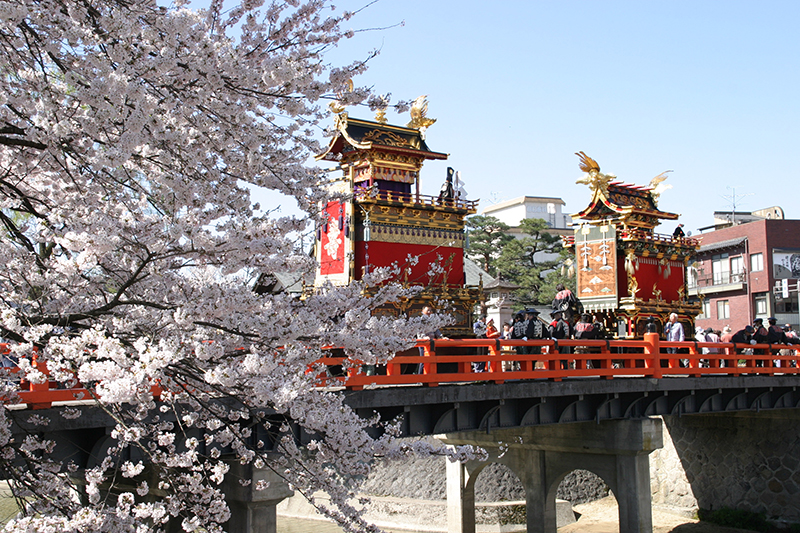Gifu’s culture is more than just tourism
When exploring Gifu’s charming landscapes, one thing that truly stands out is its authenticity. Gifu remains untouched, reflecting its genuine essence, without being remade for tourists, making it a haven of traditional villages in Japan. In towns like Gujo Hachiman, you see how the community has developed in harmony with nature. The pure water that flows from the mountains and down through channels around Gujo Hachiman has been treated as the town’s most precious resource for generations.
Just like Gujo Hachiman, numerous towns in Japan have preserved their traditional charm, with some still boasting historic quarters that evoke the essence of traditional villages in Japan. Visiting the morning markets in Takayama, the unique houses of Mino and the old town center of Hida-Furukawa, you don’t just feel history, you feel how it informs the present.
Gujo Hachiman: Gifu’s Water Town

You hear water all over Gujo Hachiman, sometimes a trickle, other times a gush or gurgle, as it makes its way down from the mountains through the 400-year-old manmade channels that crisscross the town. Gujo Hachiman has been given the moniker “mizu no machi”—the town of water—and it’s not hard to understand why when you stroll around its old streets.
The pristine water flows in front of houses, where mizufune tubs have for generations been used to divide it into clean water for drinking, then water for washing vegetables that is subsequently used to clean dishes and feed fish. The fish then act as a filter, cleaning the water before it finds its way into the river. It’s an ancient form of sustainability, and still today locals take pride in the quality of their water, taking turns to clean and maintain the waterways and make sure the water is returned to nature as clean as it was given to the town.
Water aside, there are plenty of other reasons to visit Gujo Hachiman—the centuries-old Gujo-Odori dance festival held in summer, local crafts like indigo dyeing and the giant carp banners made to celebrate Children’s Day in May, and the old-Japan feel that pervades the streets, to name just a few. But it all comes with a watery soundtrack.
Gifu’s Historic Streetscapes

In Gifu, the past and present are often intertwined. You can see it in the streets of towns across the region. In Mino, the center of Gifu’s traditional paper-making industry, one example are the preserved rows of old udatsu housing. With distinctive firebreaks between the houses that stick up above the roof, these buildings were once only affordable for wealthy merchants. Today, many of them house cafes and stores focused on regional craft—others are still homes.
Takayama, Hida Furukawa, Gujo Hachiman, and the Kawaramachi neighborhood under the gaze of Gifu Castle—there’s a long list of other historic zones in Gifu. Though popular with travelers, they aren’t preserved just for tourism. People live and work here. Just look at Takayama’s morning markets (asaichi). Held in front of the Takayama Jinya—a listed 17th-century building that was used as a local government office until as recently as the 1960s—Takayama’s Jinya-mae Asaichi sees about 30 stalls most mornings, where farmers sell fruit, vegetables and other produce. A short walk away, the riverside Miyagawa Asaichi has twice as many stalls, with a lively mishmash of woodcrafts, snacks, and farm produce that’s popular with locals and travelers alike.
Gifu’s UNESCO-designated Festivals

Throughout the year, historic festivals play out across Gifu—kept alive and relevant by the locals who proudly call Gifu home. Thanks to their efforts, three of these festivals were among the 33 traditional float festivals in Japan collectively inscribed on UNESCO’s Intangible Cultural Heritage List in 2016.
Considered as one of Japan’s “three most beautiful festivals” amongst Japanese people, the most famous of these is Takayama’s festival, which has taken place for more than 300 years. Held in spring and fall, it’s history in action as the floats are paraded through the town’s old streets accompanied by hundreds of people in period costumes—a sight that becomes even more spectacular when the floats are decorated with dozens upon dozens of lanterns at night.
Similar UNESCO-designated events take place in Ogaki in May and in Hida-Furukawa in April, although the latter comes with a twist. Part of the Furukawa Festival includes several hundred men dressed just in loin cloths clamoring to beat giant taiko drums.
Beyond the festivities, the floats for each of these events highlight the skill of Gifu’s artisans. At the Takayama Festival Floats Exhibition Hall, the four towering floats on display are ornately decorated with wood carvings, metal work, gold leaf, and lacquerware. Each is considered priceless, but so is tradition—every October they are wheeled out to take part in Takayama’s fall event.




























